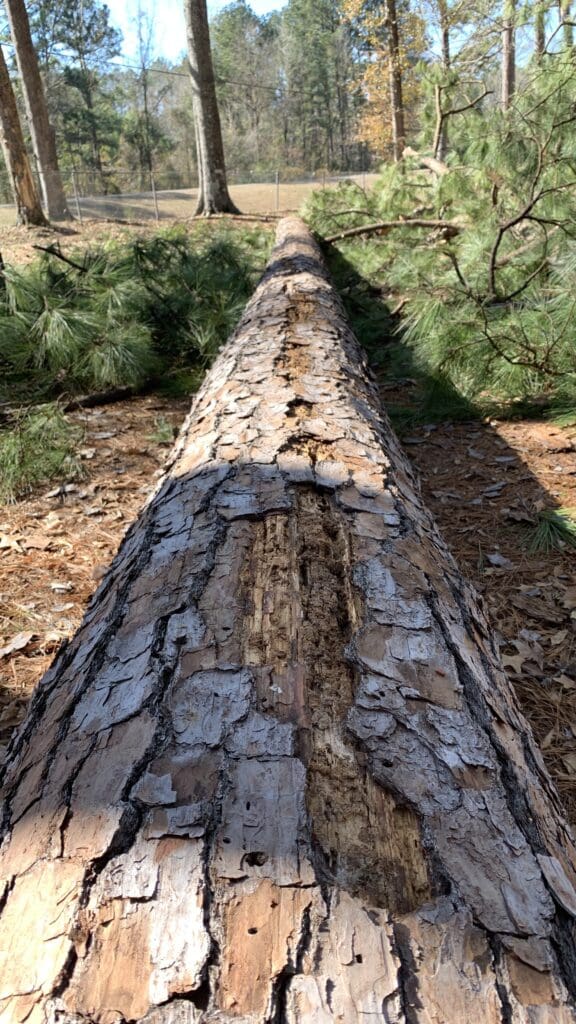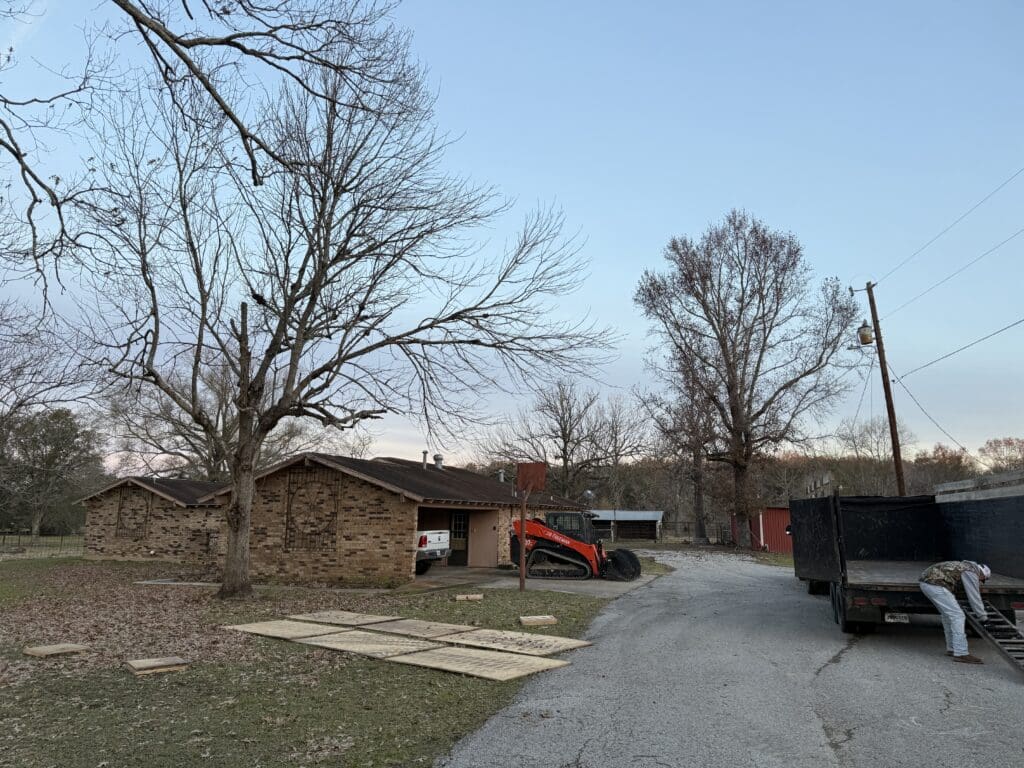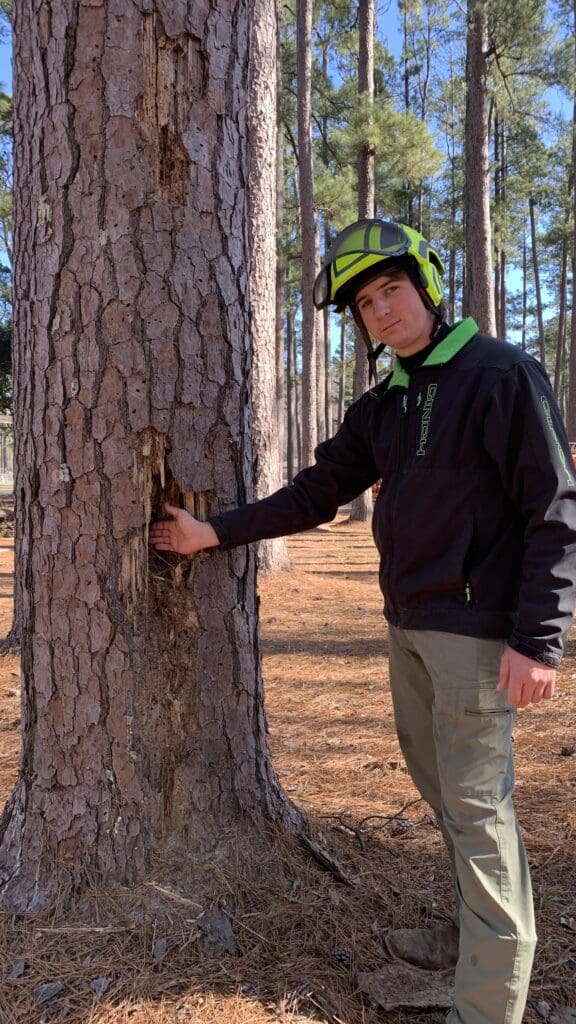Tree Assessment, How to Know When to Cut and Remove Trees
Tree Assessment Key Indicators
HLA Tree Service in CenLA offers tree assessment and expert guidance on when tree removal becomes necessary, helping you protect your property and loved ones in Central Louisiana. Trees assessments are required for proper health management. Trees in CenLA are invaluable assets to our landscapes, providing shade, beauty, and contributing to a healthier environment. They offer visual appeal, increase property value, and even help regulate temperatures. However, there comes a time when a tree might pose a hazard and require removal. Deciding whether or not to remove a tree from our CenLA landscape is a significant decision, and it’s crucial to rely on expert advice from a reputable tree service company like HLA Tree Service to ensure the safety of your property and loved ones.
This article will guide you through some tree assessment key indicators that suggest it might be time to consider tree removal.

Understanding the Warning Signs:
The health and stability of a tree should be regularly assessed. Here are some critical factors to consider:
- Dead or Dying Branches and Limbs: One of the most obvious signs is the presence of numerous dead, broken, or hanging branches. While some dead limbs are natural, a significant increase suggests a deeper problem. These weakened branches can fall unexpectedly, causing damage to property or injury to people.
- Extensive Decay: Look for signs of decay in the tree trunk and large branches. This can manifest as soft, spongy wood, hollow cavities, or fungal growth. Decay compromises the tree’s structural integrity and increases the risk of collapse.
- Leaning Trees: A tree that is suddenly leaning significantly is a cause for concern. While some trees naturally grow slightly at an angle, a sudden change, especially after a storm, could indicate root damage or soil instability. A leaning tree presents a high risk of falling.
- Uprooted Trees: A tree that is partially uprooted either from a severe storm or other causes is an immediate hazard. The tree’s root system has been compromised, and it is at high risk of falling which may damage property or cause personal injury.
- Root Problems: Examine the roots of the tree. Visible signs of decay, cracks, or fungal growth on the roots indicate a compromised root system. Severely damaged roots can’t adequately anchor the tree, making it unstable.

Threats to People and Property:
Beyond the tree’s health, consider its proximity to structures and people:
- Proximity to Buildings: Trees growing too close to buildings can cause various problems. The roots can damage foundations, sidewalks, and driveways. Falling branches can damage roofs, windows, and siding. A tree that is diseased or decaying near a structure poses a significant risk.
- Interference with Utility Lines: Trees growing near utility lines pose a serious safety hazard. Branches can interfere with power lines, causing power outages or even fires. Tree trimming around utility lines should always be performed by qualified professionals to avoid electrocution.
- Location in High-Traffic Areas: If a tree is located in a frequently used area, such as a playground, park, or near a busy street, the risk of injury from falling branches or a collapsing tree is significantly higher.

The Importance of Professional Tree Assessment:
Determining whether or not to remove a tree requires expertise and experience. An arborist from HLA Tree Service, Hessmer, Louisiana can conduct a thorough assessment of the tree, considering all relevant factors, including:
- Tree Species: Different tree species have varying lifespans and susceptibility to diseases.
- Overall Health: A comprehensive evaluation of the tree’s overall health, including its foliage, branches, trunk, and root system.
- Structural Integrity: An assessment of the tree’s structural stability, identifying any weaknesses or potential hazards.
- Environmental Factors: Considering the soil conditions, wind exposure, and other environmental factors that may affect the tree’s health and stability.
- History of Damage: A previous lightning strike or other storm damage can affect tree health.
Based on their assessment, the arborist can recommend the best course of action, whether it’s tree removal, tree trimming, or other tree care measures.
Tree Assessment, Trimming vs. Removal:
Sometimes, tree trimming can address potential problems and prolong the life of a tree. Removing dead or diseased branches can improve the tree’s health and stability. However, in cases where the tree is severely damaged, diseased, or poses an imminent threat, tree removal is the only option.
HLA Tree Service: Your Trusted Tree Care Partner in CenLA
At HLA Tree Service, we understand the importance of maintaining healthy and safe trees. Our team of experienced arborists provides comprehensive tree service in CenLA. From Alexandria and Pineville to Marksville, Bunkie and Ville Platte. Services including tree assessment, tree trimming, tree removal, and other tree care services. We are committed to providing our clients with reliable and professional service, ensuring the safety and beauty of their landscapes.
Don’t wait for a tree to become a hazard. Contact HLA Tree Service today for a professional assessment and expert advice on your tree care needs. We are here to help you make informed decisions and keep your property safe.
